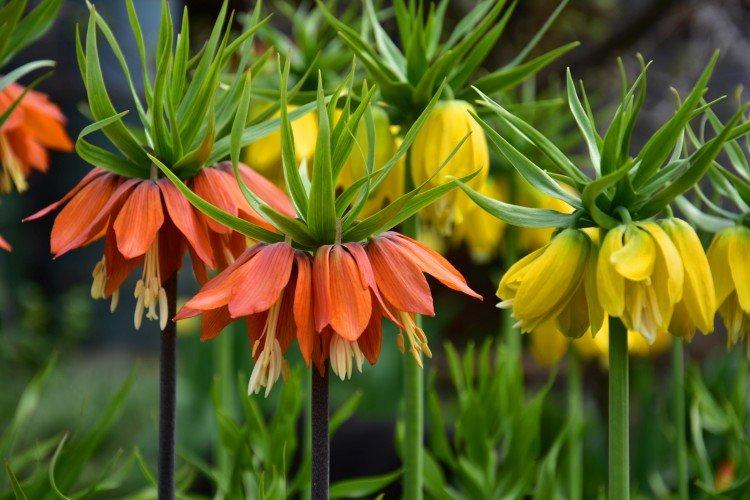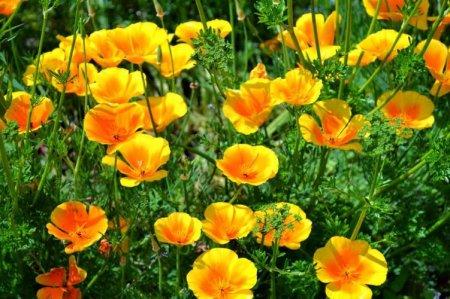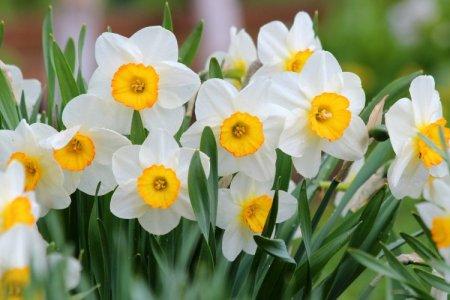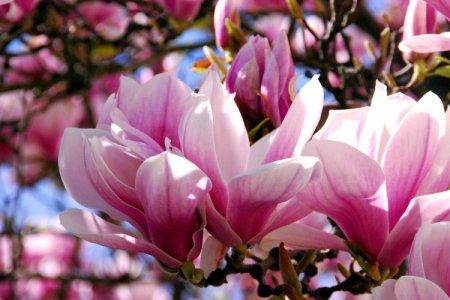
During flowering, the charming hazel grouse resembles a small exotic palm tree with unusual fruits. And all because of its bizarre shape and bright lowered buds, collected in a crown. Of course, breeders and gardeners could not pass by such a curiosity. So today you have all the variety of varieties at your disposal!
general information
You may also know the fritillaria flower. This is a lily herbaceous perennial of a very unusual species. Grouse or pockmarked - means "variegated", but the Latin name comes from the name of the glass for throwing dice. They really have a similar shape!
Grouse is a bulbous plant, and each year the bulbs are independently renewed. But keep in mind that they do not have protective scales, so they need to be treated with double delicacy. 2 peduncles sprout from one bulb, and new bulbs form at the base.
Long narrow leaves radiate from the stem, and the flowers are single or collected in inflorescences. The most common shades are yellow, red, white and purple.
The hazel grouse blooms quite early, as soon as the snow finally melts. Therefore, it harmoniously fits into landscape compositions with other spring flowers. Another important feature: hazel grouses almost do not form children, so keep this in mind if you plan to breed.

Species of hazel grouse
There are over a hundred varieties of hazel grouse, and they all grow in different regions. Many of them feel great in the Northern Hemisphere and our latitudes. We will tell you which species you should pay attention to!
Imperial hazel grouse
Or royal. And it has such a proud name for a reason, because it is the main favorite of landscape designers. In height, the shoots of such a plant reach 1.5 m. It has beautiful glossy leaves and large inflorescences of all shades from yellow to red.

Russian hazel grouse
An interesting decorative look with very narrow leaves and curled tendrils on top. Flowers in the form of a wide bell are collected in apical brushes.

Chess hazel grouse
This species gets its name from the faint pattern on the petals, which looks a bit like a checkerboard. The most popular are white and purple varieties. This hazel grouse is much smaller - about 50 cm.

Grouse Mikhailovsky
Small variety up to 20-25 cm high with the same small bulbs. It is great for alpine slides and similar decorative compositions. The burgundy flowers resemble upturned glasses.

Large-flowered hazel grouse
Medium-sized species up to 50-60 cm in height with even lanceolate leaves. Large single flowers are painted in a brownish-cherry shade with a light speckled pattern.

Pale-flowered hazel grouse
Delicate and fragile oriental variety straight from subalpine meadows. These are small flowers with bluish leaves and yellow speckled flowers.

Caucasian hazel grouse
This species attracts primarily with an unusual purple tint with a silvery sheen. The buds are not as round as in most varieties, but rather resemble a cone.

Kamchatka hazel grouse
The best option for the northern and far eastern regions. This species is so accustomed to the harshest conditions that it is not a hassle at all. Bell flowers open wider than usual and delight with interesting shades, from bronze to purple.

Grouse care
The hazel grouse has been cultivated for over 400 years, so it is not at all difficult to grow it. But it is important to follow the basic rules and recommendations, otherwise the plant may not bloom!
Temperature
Different varieties have their own requirements, but basically the comfortable temperature for the lush flowering of hazel grouses varies from +14 to +22 degrees. The plant will easily tolerate a one-time temperature drop.And this applies even to sudden frosts down to -30.

Lighting
Grouse prefers diffused sunlight. Both extremes can be destructive, because with a lack of it, the flower does not have enough strength, and direct rays lead to a decrease in inflorescences and have a bad effect on the formation of buds.

Watering
Use warm water to water the hazel grouse. The frequency depends on the rate of drying out of the soil. The flower does not need too frequent and intense watering, and often it has enough natural moisture in the garden.

The soil
Grouse are not too demanding on the composition of the soil. They prefer fertilized sandy loam soils, but grow well on any others. It is only important that the site is sufficiently loose, drained and fertile.

Fertilizers and feeding
In early spring, the hazel grouse will not be prevented by fertilizing with fertilizers with a high nitrogen content. Closer to flowering, use complex mineral fertilizers, and from folk remedies - wood ash.

Storing the bulbs
The hazel grouse is cut immediately after flowering, leaving no more than 4 cm from the base. After the end of the growth phase, you need to carefully dig the bulbs out of the ground and send them to a dry, ventilated room. There they lie and gradually grow roots again, after which they can be planted again.

Planting and breeding
Grouse bulbs are planted in late August or early autumn. It is imperative that the bulbs are stored correctly, do not dry out or rot, otherwise they will not germinate. If you plant them later, then keep in mind that they are unlikely to bloom in the coming spring.
The hazel grouse has rather large bulbs. Plant them strictly in the dug and fertilized soil to a depth of 25 cm. They need to be laid upside down, carefully spread the roots and sprinkle with soil from above.

Pest and disease control
If the temperature and humidity conditions are violated, the hazel grouse suffers from rot and fungus. The plus is that you do not need to understand their varieties. The principle of treatment always remains the same - reduce watering, remove damaged parts and treat the planting with fungicides.
The flower does not suffer from serious viruses. But in order to prevent most problems in the future, all bulbs must be carefully reviewed and disinfected before planting. And do not overfeed the plant with fertilizers, because this is how your own immunity weakens.
The most terrible pest for hazel grouse is the red-black lily beetle. Onion daylily and onion cracker are less common. Adults are not too dangerous, but the accumulation of their larvae can destroy the landing. Beetles will have to be removed mechanically, and for prevention, use insecticides and observe the correct neighborhood. For example, it is better not to grow hazel grouses near lilies of the valley.

Hazel grouse - photo
Real beauty is hidden behind such an unprepossessing name. See how spectacular and varied are the hazel grouse flowers in the garden!





























